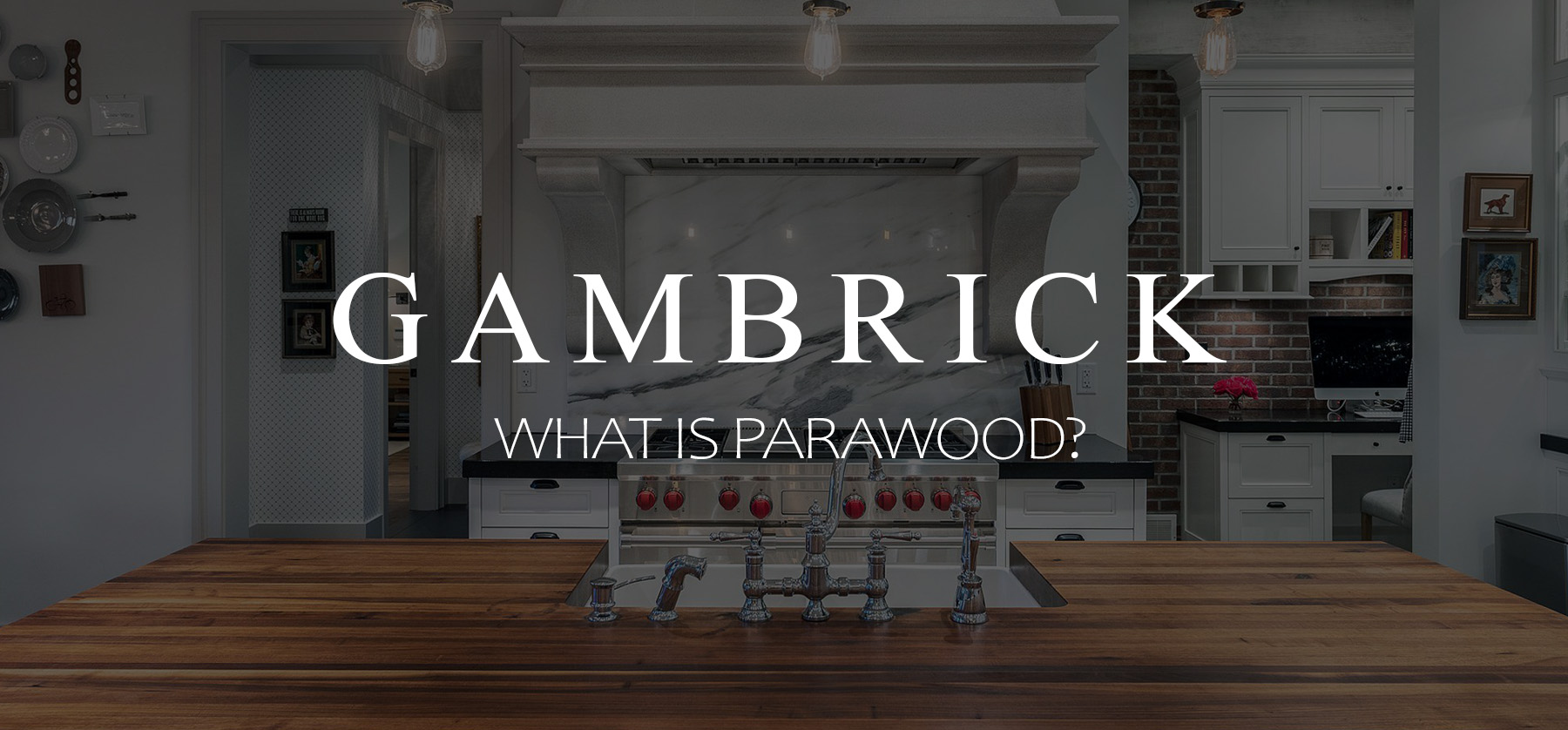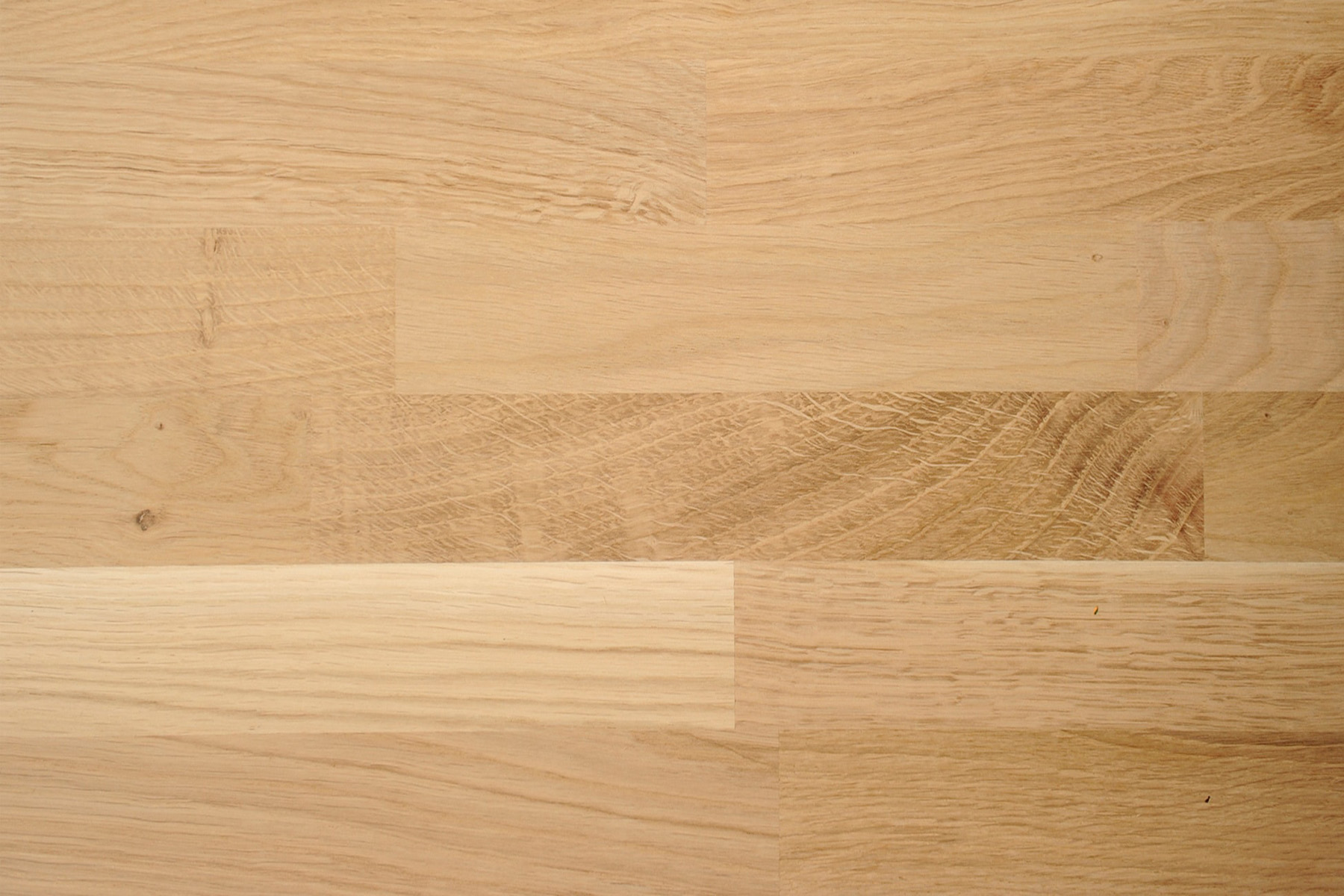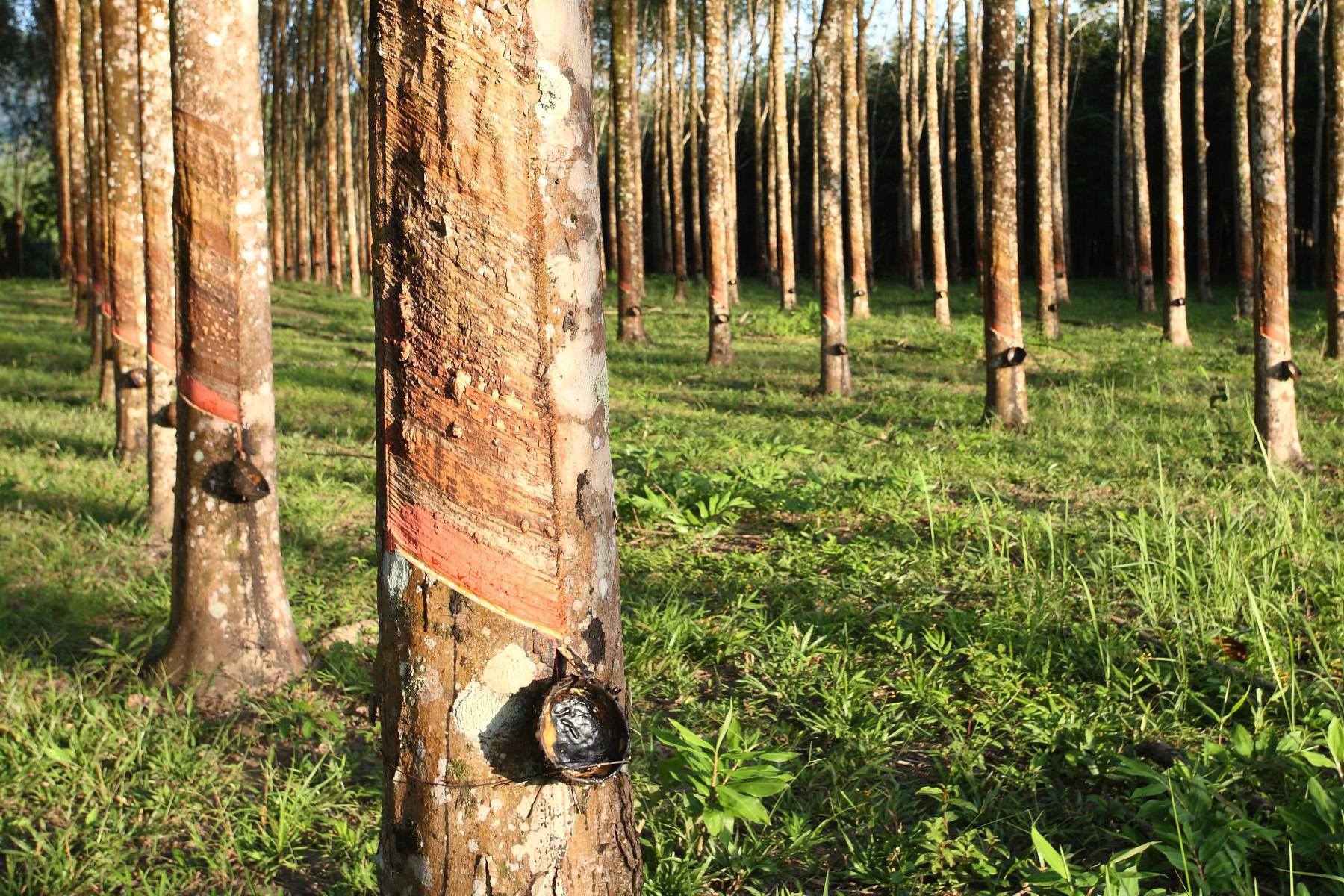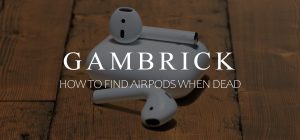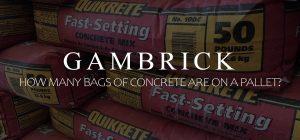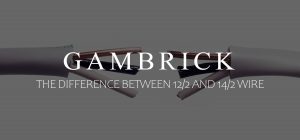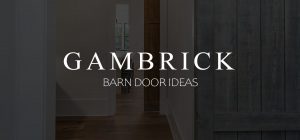What Is Parawood?
Parawood is a light colored tropical hardwood that grows in Indonesia and Central American on rubber plantations. It’s also known as rubberwood, plantation hardwood or Malaysian Oak. The rubber trees it’s grown from are considered environmentally friendly because new saplings grow from the trees that have previously been cut down. They produce a sap known as latex at around 5 years old until they’re about 30. Parawood trees can grow as high as 80 feet which provides plenty of lumber when cut down. The wood is dense with a warm color and attractive grain pattern and very few knots. This makes it great for producing all sorts of consumer products like butcher block slabs, furniture, countertops and kitchenware.
Parawood is very durable and dense, which makes it great for making furniture. It’s strong enough to withstand daily wear and tear and has a beautiful color and grain pattern. Along with its durability, Parawood is also low maintenance. So you don’t have to do much to take care of it. And it’s naturally stain resistant which helps keep the furniture looking new.
Parawood is great for indoor use but not for the outdoors because it warps and rots easily.
The wood from a parawood tree is easy to work with. The bark strips easily and the boards aren’t that hard to cut. The trees have a long trunk with few branches which means you can get long lumber without many knots. This is ideal for making furniture and butcher block slabs.
Parawood is easy to grow and care for so the wood is fairly cheap. Especially when compared to other tropical hardwoods.
The wood of a parawood tree is very dense which makes it good for burning. It burns slowly and produces a high amount of heat.
The Benefits Of Parawood
Parawood is considered to be a hardwood because it’s very durable and strong. But it’s easy to work with which makes it a favorite among furniture makers. The wood cuts easily and has a good grain pattern with very few knots.
Parawood is a very strong wood because of how dense the grain is. But, it’s also flexible and shock absorbent, which makes it great for hardwood floors. Parawood floors feel softer and easier to walk on compared to Oak and many other types of hardwood flooring. The wood has a little give to it but it still hard enough to resist day to day wear and tear. This is a great combination for a home or commercial flooring.
The wood from a rubber tree is fire-resistant because of how dense it is. It catches fire and burns slowly, which can be beneficial when used throughout a home. And it doesn’t give off toxic fumes when burned.
Because parawood burns slowly, it’s great as a firewood. However, the wood isn’t cheap so most people don’t burn much of it other than the scrap that’s not used to make furniture and other products.
The Disadvantages Of Parawood
While parawood is a great species of wood that’s used to make all sorts of products, it’s not perfect.
Parawood is a tropical hardwood that isn’t cheap. It’s grown mostly in South America which means high import and transportation fees to most of the world. Depending on where you live, parawood can get pricey. While it’s comparable in price to other hardwoods, it’s more expensive than pine and other furniture woods that can be locally sourced here in the U.S.
The wood is absorbent and stains easily when not sealed. So if you’re using it as a butcher block countertop make sure you seal it as needed. It’s also a little tricky to clean because detergents and some cleaning products can damage the wood.However, because of how popular butcher block countertops are, there are lots of cleaners on the market that work well and are safe to use.
Parawood is a very smooth wood which can get slippery when wet. This isn’t a huge problem because it’s not used much outdoors, however, if there’s a spill on a parawood floor you should clean it up right away.
What Is Parawood Used For?
There are lots of great uses for parawood. It’s a very useful and versatile species of wood that’s made into all sorts of products. You probably have parawood products in your home right now and may not even realize it.
Here are a few of the things parawood is commonly used to create:
- Cabinetry: Many kitchen and bathroom cabinets are made with parawood.
- Indoor Furniture: Parawood is great for furniture making because of how dense and strong the wood is. The gain is generally straight and there are very few knots.
- Flooring: It’s a great flooring materials because of how flexible it is but it can get slippery when wet.
- Countertops: Butcher block counters are typically made out of parawood.
- Carvings: All sorts of decorative items are carved out of the wood.
Rubber tree wood is very resilient and versatile. And it’s not only beautiful but also easy to care for. This sets it apart from many other species of wood.
Caring For Parawood
Parawood is a low maintenance wood that’s fairly easy to care for. This is one of the reasons why it’s such a popular wood for high use areas like flooring, furniture, cabinets and countertops.
Wash your parawood items with household dish soap and water. Stay away from harsh chemicals and detergents that can damage the wood. After you clean the wood, make sure to dry it thoroughly. This will prevent fungi growth.
Use wood wax to keep the wood’s color bright. Dirt can collect over time but will be blocked by the wax coating. It’s important to clean and re-wax the wood about once a year. Wax coats don’t last forever and will stop protecting the wood over time.
Parawood can discolor if it’s in a dry or hot area with lots of direct sunlight.Be strategic about where you place your furniture. A good quality seal with UV protection can help protect and preserve the wood’s coloring.
Heat can leave white rings so avoid putting hot objects in direct contact with the wood. If you set a hot item on the surface of parawood, be sure to use a coaster or an oven mitt in order to prevent heat damage. This can be a challenge when you have butcher block parawood countertops.
If a spill occurs, immediately clean up because parawood stains easily. However you can help prevent stains by sealing the wood.
I recommend sealing parawood surfaces that get a lot of usage. Surfaces like countertops and flooring should be sealed often. The more use they get the faster the seal will generally wear off. Items like cabinets and furniture that don;t get as much use can be waxed every year or so.
Working with Parawood
Parawood is a fairly easy and enjoyable wood to work with. The grain is usually straight with very few knots. And you can get long length of lumber because of how tall the trees grow. On occasion over 80 feet high. It’s easy to cut, sand and finish.
There’s really no downside to using the wood as long as you can get it. Parawood isn’t something that you’ll find at a Home Depot or Lowes. So you’ll have to special order it through a local lumber company.
If you plan on using parawood in your next woodworking project here are a few tips that may help:
Cutting
Parawood is a dense wood with a fairly tight grain. But it’s easy to cut if you have a sharp blade.
I recommend using a saw with a finish blade. It’ll give you a sharp cut. One of the benefits to using this species wood is how dense it is, which means you can get really sharp edges.
It’s also easy to cut with hand saws if the teeth are sharp. Even when cutting against the grain, it’s not hard to follow a tight line. This is essential for furniture and cabinet making that require precision cuts.
Sanding
Sanding is also easy with Parawood. It’s usually a dry wood so the dust won’t clog up the paper.
Try to sand with the grain of the wood. This will make your job a lot easier. Start with a #120 grit sandpaper for rough sanding and then finish with a #220 grit. Parawood is known for it’s really smooth finish so you can go all the way down to the finest sandpaper.
Because of how dense the wood fibers are, you can create very fine edge details with some sandpaper. I like to keep my edges sharp but some woodworkers prefer a slightly rounded edge.
The dust that come’s off parawood is fine enough to make filler out of. Simply mix the dust with some wood glue until you form a putty.
When you’re all done sanding, remove the dust with a soft cloth. I wipe the wood down with a very damp cloth or some paper towels. Make sure to remove all the moisture because standing water can stain parawood
Staining and Finishing
When you stain parawood, try to follow the grain as much as possible.
I always use a test piece of wood before I start staining. Don;t simply go by the image on the stain container. Every species of wood colors a little differently.
Apply the stain with a cloth or foam brush. Let it sit for a minute or two and then wipe it down with a cloth. Keep wiping until almost no stain comes off the wood or you achieve the color you’re looking for.
Apply a second coat of stain if needed. I prefer using two or three coats of very thin stain rather than one thick coat. Building up color produces a richer finish.
Once you’re all done staining, apply a protective finish to the surface. Don’t apply the finish until the stain is completely dry. You can test this by wiping down the wood. If no stain is lifted from the wood then it’s dry and fully absorbed.
I use a wax finish on furniture and a sealant on countertops and flooring. For wood that’s in direct sunlight, use a sealant with some UV protection.
Is Parawood The Best Choice?
There are a number of reasons why parawood may be the best choice for your countertops, furniture or flooring. It’s durable yet flexible with a beautiful coloring and grain. And it’s fairly easy to work with an affordable. It’s easy to maintain and care for when used indoors. However, it’s not a great choice for outdoor usage.
Just like any wood product, parawood needs some care and maintenance. Make sure you use a wax or sealer to keep it looking like new. especially in high use areas like countertops and flooring.
If you’re considering parawood, compare it’s characteristics and price with other species of wood. There’s a reason why so many products are made with it. For the money, parawood is a very durable and attractive wood that’s easy to build with. It’s only main drawback is outdoor use. But if you’re using indoors there’s not much to worry about.
Modern interior design trends are leaning more towards natural woods with a pale finish. parawood is great for this. The grain is attractive, it holds stain well and has a naturally pale coloring. This makes it a great choice for modern style homes that use lots of natural wood in high traffic areas.
Parawood is also easy to paint. It’s very dense and holds paint really well. However, if you’re covering up the wood with paint I’d recommend using MDF for the panels.
Overall, parawood is a great choice for all sorts of interior design projects. They’re pretty much the standard choice for butcher block countertops and many types of cabinets. I’d recommend at least considering the wood for your next home remodel or new home build.
Is Parawood Real Wood?
Parawood is real wood that comes from the rubber tree. It’s grown primarily in South America and is considered a tropical hardwood.
The wood of the rubber tree, known as parawood, is very dense, durable and attractive. It has a nice straight grain pattern with very few knots. The wood can be sanded extremely smooth, holds stain well and has a natural pale color. And although the wood is very hard and dense, it’s quite flexible. This makes it a great wood for flooring.
The most common use of parawood is real wood butcher block countertops and real wood furniture.
Does Parawood Stain Well?
Parawood is a very dense and string wood that stains really well. The stain absorbs quickly and is easy to apply. Parawood has a natural pale color which makes staining easier because the stain color doesn’t compete with the wood.
Staining wood is very different than using paint. Paint is opaque and stain is translucent. This means the same stain will look different depending on the color of the wood you’re staining. Some wood is yellow, some brown and some reddish. But parawood is a very pale neutral, so the color of the stain is more true. This makes it much easier to stain because you don’t have to worry about counteracting the wood’s undertones. You’ll also have more color options because you don’t have to overcome or really even consider the wood’s coloring.
Does Parawood Scratch Easily?
Parawood is a very dense tropical hardwood that’s not easy to scratch. Its density and scratch resistance are what make it such a fantastic countertop, furniture and flooring material. Have you ever seen wood butcher block counters. The vast majority of them are made out of parawood.
Parawood has a Janka hardness score of 980 lbs. This is the scale that measures the hardness of wood. That’s around the same hardness as teak and walnut but just a little softer than hard oak which means it will not scratch or dent easily.
Can Parawood Be Painted?
Parawood is a fantastic wood for painting. It’s very dense and smooth with almost no knots or pores. Because of how hard and smooth the surface is, it holds paint really well. In my experience, parawood panels and trim pieces are on par with some of the finest surfaces to paint including MDF.
Parawood (rubberwood) has a naturally pale color that’s almost white. This is a benefit because in some cases you can paint pale colors without using a primer.
Because parawood doesn’t generally have pores and pits, you can sand and paint the surface extremely smooth. This provides a finish equal to some of the highest grade cabinetry and trim.
One of the disadvantages to painting parawood is that it expands and contracts just like any other wood species. MDF doesn’t. For this reason, most high end cabinets use wood trim with MDF flat panels.
Is Parawood Good Quality?
Parawood is a very high quality wood that’s suitable for cabinetry and furniture making. It’s extremely dense, sands smooth and has a naturally pale coloring which makes it a great blank slate for paint and stain.
The wood is very dense and doesn’t scratch or dent easily. And because it’s a real wood, you can repair it if damage occurs.It’s also flexible which makes it great for flooring.
Is Rubberwood Furniture Toxic?
Rubberwood furniture, also called parawood, is not toxic. That is to say the wood is not toxic. Even when rubberwood is burned it doesn’t generally give off toxic fumes. However, if the wood is painted, stained or treated with toxins, then it may be considered toxic.
Check with the manufacturer to see how the wood was treated before considering the furniture non-toxic.
Is Rubberwood Similar To Oak?
Rubberwood, a.k.a. Parawood, is very similar to Oak because they’re in the same family. They’re both very dense woods that are strong and resistant to scratches. However, Parawood has a tighter grain than Oak and paler color. Some cuts of Rubberwood are almost white. This is great for staining and painting because you don’t have a strong undertone to work with. I think Parawood is actually closer in appearance to Teak than most cuts of Oak.
Parawood is more flexible than Oak which makes it great for flooring. However, it’s not as durable when used outdoors.
Parawood Vs Other Types of Lumber
There is a wide variety of wood species on the market. All with their own benefits and disadvantages. And no one type of wood is best for every project.
When I have a woodworking or furniture project and have to pick the best wood, I think about two things. What do I need the item to do and what can I get from the wood. I always start by analyzing the finished product in my mind and then I work backwards. In many cases, parawood ends up being the best choice.
I also compare rubberwood to other species to see if it’s the best fit. This is because many types of wood share similar characteristics.
How and where you’ll be using the item is an important consideration too. A custom piece of furniture may look great in a shop, but will it hold up in a house filled with kids and pets.
In this section we’ll be comparing parawood to a variety of other common woods.
Parawood Vs. Oak
Parawood and oak are very similar in nature. Both trees are from the oak family and are often used for similar purposes. They both have a strong, straight grain with a smooth finish. But they have a different coloring. Oak tends to be the darker and richer of the two. Although it depends on which species of oak you use. White oak is actually a little lighter than parawood.
Parawood is the more durable of the two because it’s fibers are denser. And it’s a bit more flexible which makes it nice as a hardwood flooring.
Oak is easier to damage and doesn’t typically last as long. However it’s more resistant to fungi, moisture and bugs. This makes it much better as an outdoor material or when used in an indoor/outdoor type sunroom.
Because of it’s density, parawood is commonly used as a butcher block countertop material. This isn’t something you’d see made out of oak.
In terms of cabinetry, both species of wood are used but oak is the winner. Oak cabinets are considered a higher end cabinet because of how well they take darker stains. However, if you plan on painting the cabinets, I’d use parawood. It’s dense smooth surface holds paint well.
Parawood Vs. Beech Wood
Beech wood and parawood are both pale-colored, dense and shock absorbent.
Parawood is the softer and more flexible of the two which makes it better as a hardwood flooring. But beechwood is harder and easier to stain.
Beechwood is also used to make furniture but we use it more as a thin veneer. Beech wood veneer plywood is a very good product that’s used to make cabinetry.
The grain pattern of beech wood is different than parawood. Get a sample of both if you’re making cabinets or furniture that require staining. Both wood species hold stain and paint fairly well.
Parawood Vs. Pine
Parawood is very different than pine.
Parawood produces latex while pine creates a resin. This main difference means that the wood is best suited for different things.
Pine doesn’t rot as easily as parawood which makes it better for outdoor usage. However, parawood is denser and better suited for making indoor furniture. It’s better looking, stains and paints better and is more durable. However, it’s a lot more expensive.
Pine is a softer, less durable and less attractive wood. But it’s cheaper. In some cases, such as moldings that will be painted, pine is the better choice. Pine also has a very wide grain pattern which some designers find attractive. But it’s very soft and easy to damage so I wouldn’t use it in places that get lots of traffic.
For furniture making, there’s no real comparison. Parawood is the better choice almost every time. The only real benefit to using pine is price and better durability in the outdoors.
Parawood Vs. Maple
Maple wood has a variety of very attractive tones that can range from white to a more grey brown. This variety is what sets it apart from parawood and many other species of wood.
Maple is used to produce sports-related items, like hockey sticks, bows, bowling pins, and wood bats because of how tough the wood is. It’s more dense and stay straighter than almost any type of wood.
I use a lot of maple for my cabinetry and furniture making. But it’s not as flexible and generally costs more so it’s not always the better choice.
Summary: What Is Parawood?
Parawood is a light colored tropical hardwood that grows in Indonesia and Central American on rubber plantations. It’s also known as rubberwood, plantation hardwood or Malaysian Oak. The rubber trees it’s grown from are considered environmentally friendly because new saplings grow from the trees that have previously been cut down. They produce a sap known as latex at around 5 years old until they’re about 30. Parawood trees can grow as high as 80 feet which provides plenty of lumber when cut down. The wood is dense with a warm color and attractive grain pattern and very few knots. This makes it great for producing all sorts of consumer products like butcher block slabs, furniture, countertops and kitchenware.
It’s very durable and dense, which makes it great for making furniture. It’s strong enough to withstand daily wear and tear and has a beautiful color and grain pattern. Along with its durability, Parawood is also low maintenance. So you don’t have to do much to take care of it. And it’s naturally stain resistant which helps keep the furniture looking new.
It’s great for indoor use but not for the outdoors because it warps and rots easily. But it’ burns slow and produces high heat.
The wood from a rubber tree is easy to work with. The bark strips easily and the boards aren’t that hard to cut. The trees have a long trunk with few branches which means you can get long lumber without many knots. This is ideal for making furniture and butcher block slabs.
Parawood is easy to grow and care for so the wood is fairly cheap. Especially when compared to other tropical hardwoods.
If you have any questions or comments about wood, email us any time.
